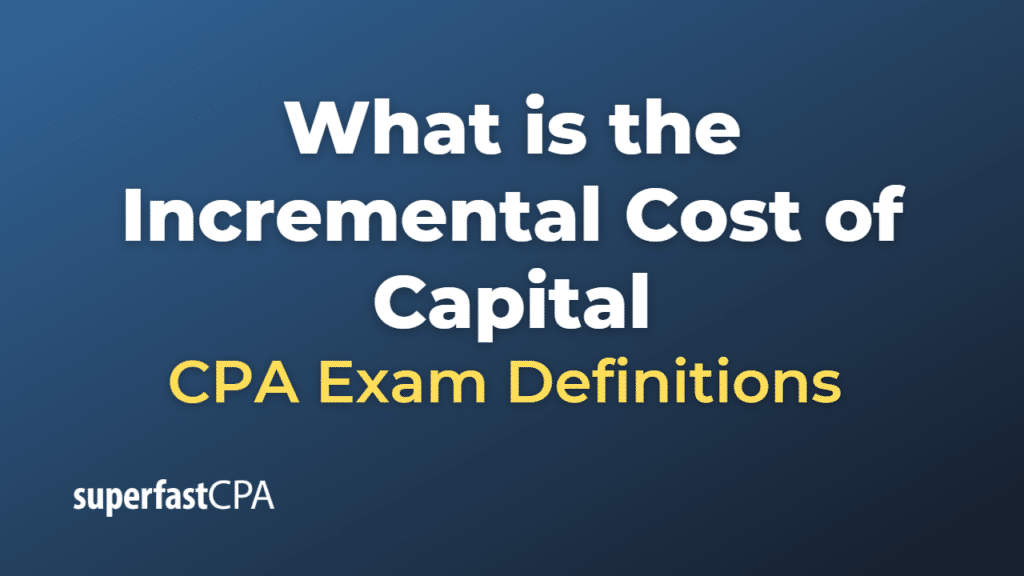Incremental Cost of Capital
The incremental cost of capital refers to the weighted average cost of the additional capital a company raises to fund its new investments or projects. In other words, it’s the cost of obtaining one more dollar of new capital. This cost reflects the returns that the providers of the capital (both debt and equity holders) expect to receive for their investment in the company.
The incremental cost of capital can vary depending on the source of the capital. For instance, issuing new equity could be more expensive than issuing new debt, due to factors such as flotation costs, tax benefits of debt, and changes in risk perceptions.
In the context of capital budgeting decisions, the incremental cost of capital acts as the discount rate used to calculate the net present value (NPV) of a proposed project. In essence, a project would be considered worthwhile if its return exceeds the incremental cost of capital, as it implies that the project is expected to earn more than what the new capital providers require as a return.
The incremental cost of capital plays a vital role in a company’s capital structure decision, as it helps the company to understand how its mix of debt and equity financing affects its overall cost of capital, and therefore its profitability and risk.
Example of the Incremental Cost of Capital
Suppose a company is looking to raise $1 million to fund a new project. The company has two main sources of capital: debt and equity. For this project, the company decides to finance it with a mix of 60% debt and 40% equity.
The current cost of debt (interest rate) for the company is 5%, and the cost of equity (required rate of return for shareholders) is 8%.
The company’s tax rate is 30%. One of the benefits of debt financing is that interest payments are tax-deductible, so the after-tax cost of debt is 5% * (1 – 30%) = 3.5%.
Now we calculate the weighted average cost of the new capital, which is also the incremental cost of capital:
(60% * 3.5%) + (40% * 8%) = 2.1% + 3.2% = 5.3%
So, the incremental cost of capital for this new project is 5.3%. The company would need the project to generate a return greater than this to justify the project from a financial perspective.
This is a simplified example and in the real world, other factors might come into play such as flotation costs (the costs of issuing new securities), changes in the company’s risk profile, and market conditions. But it serves to illustrate the basic concept of the incremental cost of capital.













